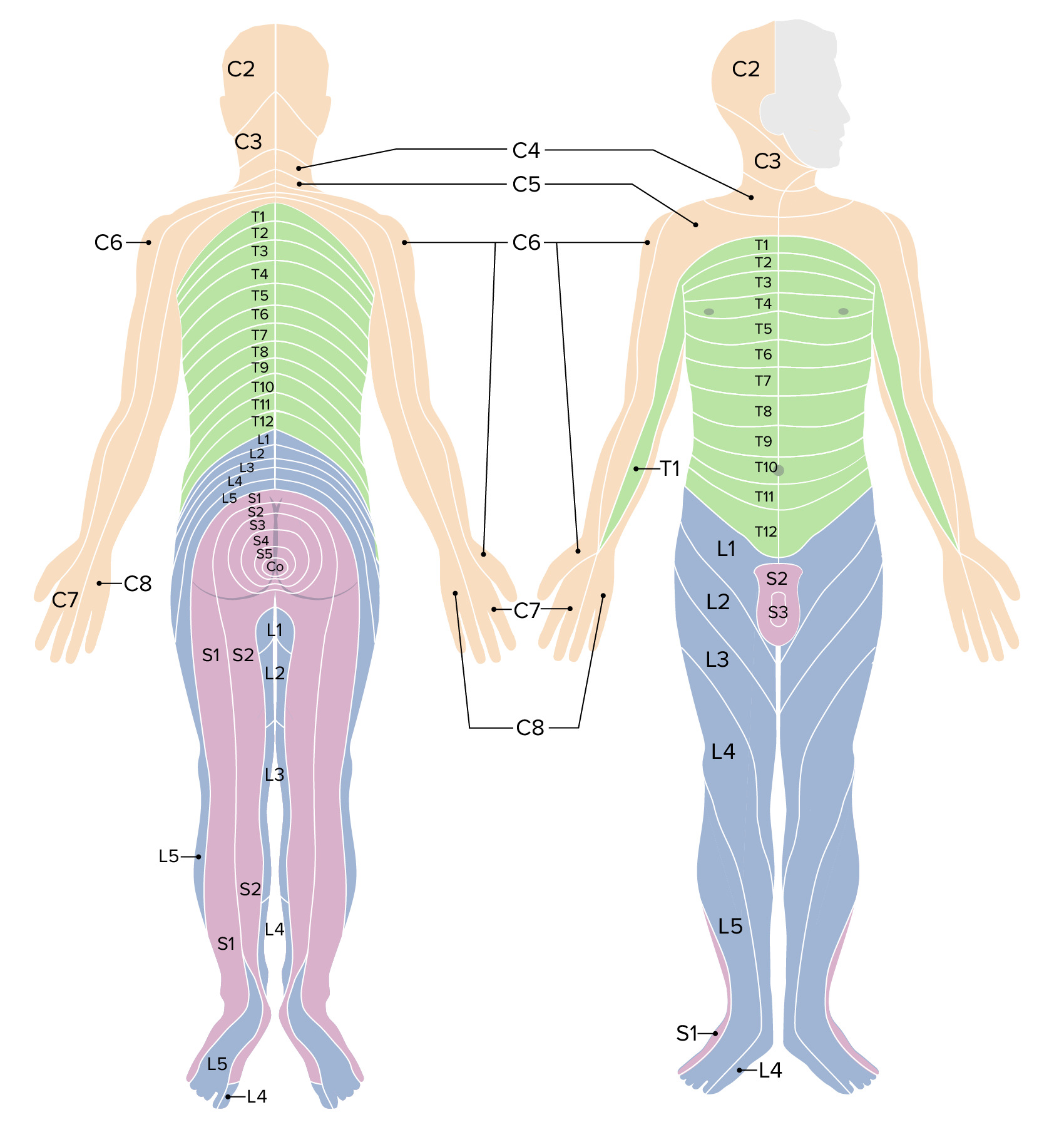Playlist
Show Playlist
Hide Playlist
Descending Pathways: Corticospinal Tracts
-
Slides 4 SpinalCord2 BrainAndNervousSystem.pdf
-
Reference List Anatomy.pdf
-
Download Lecture Overview
00:00 Welcome to this presentation on the spinal cord. During this presentation, you’ll learn more about the ascending and descending tracts that are associated with the spinal cord. First, we’re going to take a look at descending pathways. When you look at the descending pathways, you are looking at corticospinal tracts. 00:27 This is a nice cross section of the spinal cord and tracts are highlighted here in various colors. One of the corticospinal tracts is the lateral corticospinal tract that you see in through here. This is a fairly large descending pathway. Descending pathways are coming from, in this case, the cortex of the cerebrum down to the spinal cord. The prefix will always tell you the starting point of the pathway. The suffix will tell you the destination of the pathway. Cortico, starting point is the cortex; spinal, destination is the spinal cord. 01:11 There’s also an anterior corticospinal tract. That is shown here in a much more anterior location. 01:20 It is not nearly as large as the lateral corticospinal tract. The purpose of this slide is to help you understand the two neurons that make up this particular pathway and what happens as they leave their starting point and reach their destination. First is that you have an upper motor neuron shown right in through here. 01:52 This resides in the primary motor cortex and specifically, this is in the precentral gyrus. This upper motor neuron will send its axon downwards in a descending manner. It will pass through the internal capsule. 02:12 Then, it’s going to pass through the cerebral peduncle in the midbrain. Now, it has reached the medullary pyramids. 02:25 Some of the descending fibers will remain ipsilateral and some of them are going to decussate. 02:33 90% percent of the axons that we see here, 90% percent will decussate within the medullary pyramids and go over to the opposite or contralateral side. We started on the left side. Now, 90% of those axons are decussating over into the right medullary pyramid. Then they’ll continue their journey down in the lateral corticospinal tract. As you may remember from the previous slide, the lateral corticospinal tract is much larger than the anterior corticospinal tract. The lateral corticospinal tract is going to supply distal musculature. 03:22 The 10% of the axons that do remain ipsilateral are going to form the anterior corticospinal tract. 03:33 Then they will decussate at the level of the spinal cord. Then within the spinal cord, lower motor neurons will be activated. That’s the second neuron in this pathway. It will send axons out to the skeletal musculature. 03:55 Again, the lower motor neurons of the spinal cord that are in the lateral corticospinal tract do the distal musculature. Then the lower motor neurons that are in the anterior corticospinal tract are going to do more proximal musculature. That would be the axial musculature of the body.
About the Lecture
The lecture Descending Pathways: Corticospinal Tracts by Craig Canby, PhD is from the course Spinal Cord.
Included Quiz Questions
In which of the following areas do the upper motor neurons of the corticospinal tract reside?
- Precentral gyrus
- Postcentral gyrus
- Prefrontal area
- Somatic sensory association area
- Central sulcus
Which of the following statements regarding the corticospinal tract is CORRECT?
- The lateral corticospinal tract is formed from 90% of descending fibers, decussating at the level of the medulla.
- The lateral corticospinal tract innervates the proximal musculature.
- The majority of descending fibers decussate at the level of the internal capsule.
- The anterior corticospinal tract innervates the distal musculature.
- Ipsilateral descending fibers participate in the formation of the lateral corticospinal tract.
What is the name of the midline structure where decussation of the anterior corticospinal tract fibers occurs?
- Anterior white commissure
- Midbrain
- Medullary pyramid
- Genu of internal capsule
- Anterior limb of internal capsule
Customer reviews
5,0 of 5 stars
| 5 Stars |
|
3 |
| 4 Stars |
|
0 |
| 3 Stars |
|
0 |
| 2 Stars |
|
0 |
| 1 Star |
|
0 |
This was very helpful, pretty neat and clear explanation. Thank you very much.
Excellent explanation of the descending tracts. Good review and diagrams.
Loved it, so clear and easy to understand. The presentation is extremely useful




